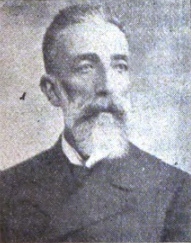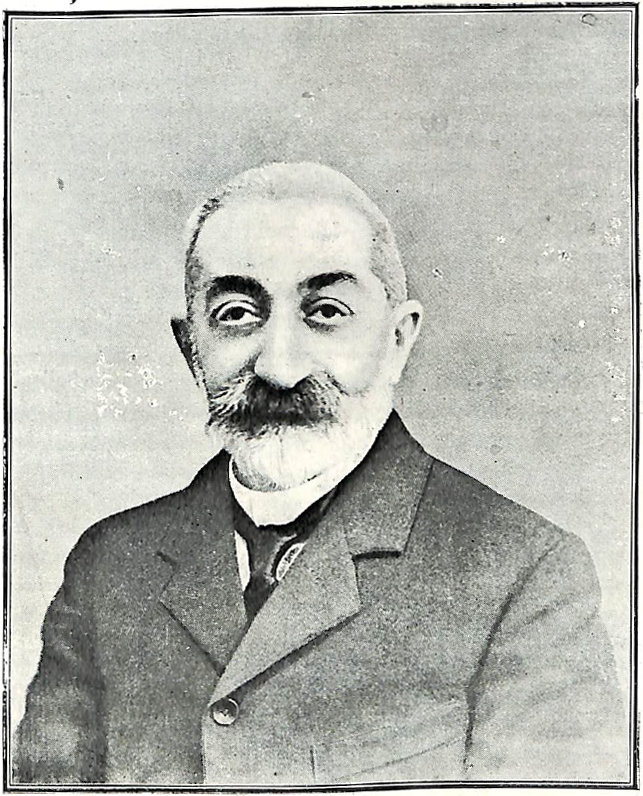|
Mkrtich
Mkrtich (Armenian: ) is an Armenian male given name, meaning ''Baptist'' in Armenian. The name, refers originally to John the Baptist, known as Surb Hovhannes Mkrtich (Saint-John the Baptist) in Armenian.Sushil Chaudhury, Kéram Kévonian Les Arméniens dans le commerce asiatique au début de l'ère 2008 Page 84 "The church carrying the name of Surb Hovhannes Mkrtich (Saint-John the Baptist)... " The widespread family name ''Mkrtchyan'' is formed from this given name. The name is usually romanized directly into English as Mkrtich, but other romanizations are found: * Mkrtich Khrimian (1820–1907), Catholicos of All Armenians * Mkrtich Achemian (1838–1917), Constantinople-born Armenian poet. * Mekertich Portukalian (1848–1921) Armenian teacher The name is romanized in Turkish as Mıgırdiç: * Mıgırdiç Margosyan (1938) Turkish-language Armenian author. * Mıgırdiç Civanyan Mıgırdiç Civanyan ( hy, Մկրտիչ Ճիվանեան, 1848 – February 14, 1906) was ... [...More Info...] [...Related Items...] OR: [Wikipedia] [Google] [Baidu] |
Mkrtich Khrimian
Mkrtich Khrimian or ''Mıgırdıç Kırımyan'' ( classical hy, Մկրտիչ Խրիմեան, reformed: Մկրտիչ Խրիմյան; 4 April 182029 October 1907) was an Armenian Apostolic Church leader, educator, and publisher who served as Catholicos of All Armenians from 1893 to 1907. During this period he was known as Mkrtich I of Van (Մկրտիչ Ա Վանեցի, ''Mkrtich A Vanetsi''). A native of Van, one of the largest cities in Turkish (Western) Armenia, Khrimian became a celibate priest (vardapet) in 1854 after the death of his wife and daughter. In the 1850s and 1860s he served as the abbot of two important monasteries in Turkish Armenia: Varagavank near Van and Surb Karapet Monastery near Mush. During this period he established schools and journals in both monasteries. He served as Patriarch of Constantinople—the most influential figure within the Ottoman Armenian community—from 1869 to 1873 and resigned due to pressure from the Ottoman government which saw hi ... [...More Info...] [...Related Items...] OR: [Wikipedia] [Google] [Baidu] |
Mkrtich Achemian
Mkirtich Achemian ( hy, Մկրտիչ Աճէմեան) (1838–1917) was an ethnic Armenian poet. Biography Achemian was born in 1838 in Ortaköy, a suburb of Constantinople and received his early education in a local Armenian school. Beginning in 1852, he continued his education in Murat-Raphaelian school in Venice where he developed his literary talent under Ghevond Alishan. He returned to Constantinople in 1858 and started working for the State Telegraph Administration, he kept this job for most of his life. Achemian's poems were published in various newspapers and periodicals, and were eventually collected into three books. ''Smiles and Tears'' (Ժպիտք եւ արտասուք, 1871), ''Light and Shadows'' (Լոյս եւ ստուերք, 1878) and ''Spring Winds'' (Գարնան հովեր, 1892). In 1908 he published all three books as one volume, with additional poems that he had written since 1892. He also published a collection of translated poems, ''Diverse Translations'' ... [...More Info...] [...Related Items...] OR: [Wikipedia] [Google] [Baidu] |
Mkrtchyan
Mkrtchyan or Mkrtchian may refer to: *Aghvan Mkrtchyan (born 1981), Armenian football defender *Armen Mkrtchyan (born 1973), Armenian wrestler * Arthur Mkrtchyan (born 1973), retired Armenian football defender *Artur Mkrtchyan (1959–1992), the First Chairman of Supreme Council of the Nagorno-Karabakh Republic * Hovhannes Mkrtchyan (born 1991), Armenian figure skater *Karlen Mkrtchyan (born 1988), Armenian football midfielder * Levon Mkrtchyan (born 1953), Armenian director known for documentaries * Lilit Mkrtchyan (born 1982), Armenian grandmaster and four-time Armenian Women's champion * Frunzik (Mher) Mkrtchyan (1930–1993), Soviet Armenian actor, named a People's Artist of the Soviet Union in 1984 * Samvel Mkrtchyan (1959–2014), Armenian translator, editor and writer * Susanna Mkrtchyan (born 1949), Armenian professor and founder of Wikimedia Armenia See also * Makran *Mkrtich Mkrtich (Armenian: ) is an Armenian male given name, meaning ''Baptist'' in Armenian. The name, r ... [...More Info...] [...Related Items...] OR: [Wikipedia] [Google] [Baidu] |
Armenians
Armenians ( hy, հայեր, ''hayer'' ) are an ethnic group native to the Armenian highlands of Western Asia. Armenians constitute the main population of Armenia and the ''de facto'' independent Artsakh. There is a wide-ranging diaspora of around five million people of full or partial Armenian ancestry living outside modern Armenia. The largest Armenian populations today exist in Russia, the United States, France, Georgia, Iran, Germany, Ukraine, Lebanon, Brazil, and Syria. With the exceptions of Iran and the former Soviet states, the present-day Armenian diaspora was formed mainly as a result of the Armenian genocide. Richard G. Hovannisian, ''The Armenian people from ancient to modern times: the fifteenth century to the twentieth century'', Volume 2, p. 421, Palgrave Macmillan, 1997. Armenian is an Indo-European language. It has two mutually intelligible spoken and written forms: Eastern Armenian, today spoken mainly in Armenia, Artsakh, Iran, and the former Soviet ... [...More Info...] [...Related Items...] OR: [Wikipedia] [Google] [Baidu] |
Armenian Language
Armenian ( classical: , reformed: , , ) is an Indo-European language and an independent branch of that family of languages. It is the official language of Armenia. Historically spoken in the Armenian Highlands, today Armenian is widely spoken throughout the Armenian diaspora. Armenian is written in its own writing system, the Armenian alphabet, introduced in 405 AD by the priest Mesrop Mashtots. The total number of Armenian speakers worldwide is estimated between 5 and 7 million. History Classification and origins Armenian is an independent branch of the Indo-European languages. It is of interest to linguists for its distinctive phonological changes within that family. Armenian exhibits more satemization than centumization, although it is not classified as belonging to either of these subgroups. Some linguists tentatively conclude that Armenian, Greek (and Phrygian) and Indo-Iranian were dialectally close to each other;''Handbook of Formal Languages'' (1997p. 6 wit ... [...More Info...] [...Related Items...] OR: [Wikipedia] [Google] [Baidu] |
John The Baptist
John the Baptist or , , or , ;Wetterau, Bruce. ''World history''. New York: Henry Holt and Company. 1994. syc, ܝܘܿܚܲܢܵܢ ܡܲܥܡܕ݂ܵܢܵܐ, Yoḥanān Maʿmḏānā; he, יוחנן המטביל, Yohanān HaMatbil; la, Ioannes Baptista; cop, ⲓⲱⲁⲛⲛⲏⲥ ⲡⲓⲡⲣⲟⲇⲣⲟⲙⲟⲥ or ; ar, يوحنا المعمدان; myz, ࡉࡅࡄࡀࡍࡀ ࡌࡀࡑࡁࡀࡍࡀ, Iuhana Maṣbana. The name "John" is the Anglicized form, via French, Latin and then Greek, of the Hebrew, "Yochanan", which means "YHWH is gracious"., group="note" ( – ) was a mission preacher active in the area of Jordan River in the early 1st century AD. He is also known as John the Forerunner in Christianity, John the Immerser in some Baptist Christian traditions, and Prophet Yahya in Islam. He is sometimes alternatively referred to as John the Baptiser. John is mentioned by the Roman Jewish historian Josephus and he is revered as a major religious figure Funk, Robert W. & the Jes ... [...More Info...] [...Related Items...] OR: [Wikipedia] [Google] [Baidu] |
Mekertich Portukalian
Mekertich Portukalian ( hy, Մկրտիչ Փորթուգալեան; October 21, 1848 – October 1921) was an Armenian teacher and journalist who founded the first Armenian political party, the Armenakan Party, in Van in 1885. The son of a banker in Constantinople, Portukalian became a teacher and initially taught at Tokat. in 1873 Portukalian was arrested by the Ottoman authorities and the school he directed in Tokat was closed. He was released the same year and became the editor of the journal ''Asia'' in Constantinople. After a trip to Western Anatolia and the Balkans, he opened a school in Van in 1878. The school soon fell apart due to conflict among its members, and closed before the end of the year. During and immediately after the Russo-Turkish War of 1877–1878, he traveled to various cities in Russian and Ottoman Armenia, calling on Armenians to take up armed struggle. After the war, he participated in the creation of the Black Cross revolutionary society in Van. Por ... [...More Info...] [...Related Items...] OR: [Wikipedia] [Google] [Baidu] |
Mıgırdiç Margosyan
Mıgırdiç Margosyan (23 December 1938 – 2 April 2022) was a Turkish Armenian language-writer. Background Margosyan was born on 23 December 1938 in the Hançepek district of Diyarbakır, Turkey. He received his primary education at the Süleyman Nazif Elementary School and the Ziya Gökalp Middle School in Diyarbakır, and continued his secondary education at the Armenian community schools in Istanbul, attending Bezciyan Middle School and Getronagan Armenian High School. Margosyan received his college degree from the Philosophy Department of the Faculty of Letters at Istanbul University. Between 1966 and 1972, Margosyan worked as the school director of the Surp Haç Tıbrevank Armenian High School and also taught philosophy, psychology, Armenian language, and literature. Later, he left teaching and started commercial activities. Writing career Margosyan published a number of short stories in Armenian at the '' Marmara'' newspaper, some of which were later collected and p ... [...More Info...] [...Related Items...] OR: [Wikipedia] [Google] [Baidu] |
Mıgırdiç Civanyan
Mıgırdiç Civanyan ( hy, Մկրտիչ Ճիվանեան, 1848 – February 14, 1906) was an Ottoman Empire, Ottoman Armenians, Armenian painter. Life Mıgırdiç Civanyan was born in the Beşiktaş district of Istanbul, Constantinople in 1848. In 1874, he met with famed Armenians in Russia, Russian-Armenian painter Ivan Aivazovsky, whose work inspired Civanyan to incorporate much of the love for the sea into his own paintings. Already knowing Italian, Civanyan went to Italy in 1876 and remained there until 1879. Due to the Hamidian massacres of Armenians, Civanyan sought refuge in Odesa, Odessa in the spring of 1894. Style and Subject Matter Mıgırdiç Civanyan is known for painting landscapes of Constantinople, especially that of the Bosphorus. Gallery File:Megerdich Jivanian - Said Paşa Waterfront Mansion - Google Art Project.jpg, Said Paşa Waterfront Mansion File:Megerdich Jivanian (from Thomas Allom) - A Coffee House in Tophane - Google Art Project.jpg, A Coffee House ... [...More Info...] [...Related Items...] OR: [Wikipedia] [Google] [Baidu] |




